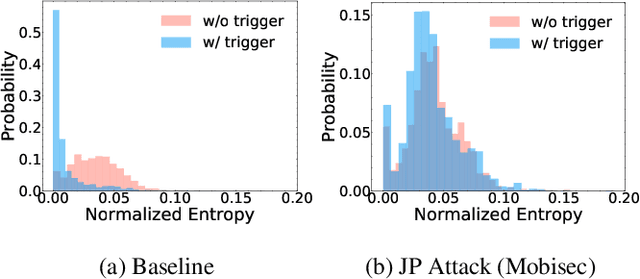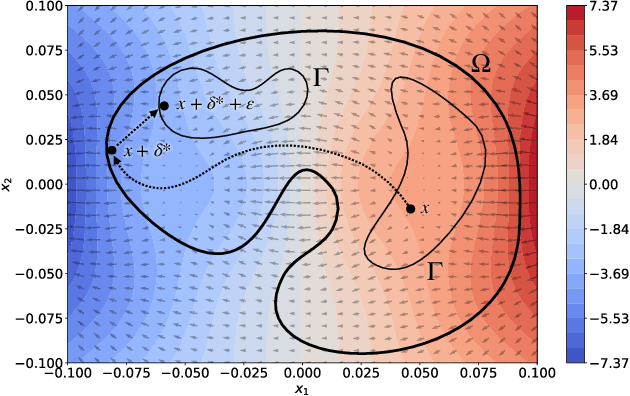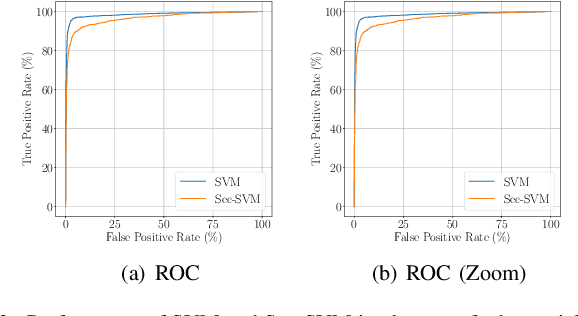Jacopo Cortellazzi
How to Train your Antivirus: RL-based Hardening through the Problem-Space
Feb 29, 2024Abstract:ML-based malware detection on dynamic analysis reports is vulnerable to both evasion and spurious correlations. In this work, we investigate a specific ML architecture employed in the pipeline of a widely-known commercial antivirus company, with the goal to harden it against adversarial malware. Adversarial training, the sole defensive technique that can confer empirical robustness, is not applicable out of the box in this domain, for the principal reason that gradient-based perturbations rarely map back to feasible problem-space programs. We introduce a novel Reinforcement Learning approach for constructing adversarial examples, a constituent part of adversarially training a model against evasion. Our approach comes with multiple advantages. It performs modifications that are feasible in the problem-space, and only those; thus it circumvents the inverse mapping problem. It also makes possible to provide theoretical guarantees on the robustness of the model against a particular set of adversarial capabilities. Our empirical exploration validates our theoretical insights, where we can consistently reach 0\% Attack Success Rate after a few adversarial retraining iterations.
Jigsaw Puzzle: Selective Backdoor Attack to Subvert Malware Classifiers
Feb 11, 2022



Abstract:Malware classifiers are subject to training-time exploitation due to the need to regularly retrain using samples collected from the wild. Recent work has demonstrated the feasibility of backdoor attacks against malware classifiers, and yet the stealthiness of such attacks is not well understood. In this paper, we investigate this phenomenon under the clean-label setting (i.e., attackers do not have complete control over the training or labeling process). Empirically, we show that existing backdoor attacks in malware classifiers are still detectable by recent defenses such as MNTD. To improve stealthiness, we propose a new attack, Jigsaw Puzzle (JP), based on the key observation that malware authors have little to no incentive to protect any other authors' malware but their own. As such, Jigsaw Puzzle learns a trigger to complement the latent patterns of the malware author's samples, and activates the backdoor only when the trigger and the latent pattern are pieced together in a sample. We further focus on realizable triggers in the problem space (e.g., software code) using bytecode gadgets broadly harvested from benign software. Our evaluation confirms that Jigsaw Puzzle is effective as a backdoor, remains stealthy against state-of-the-art defenses, and is a threat in realistic settings that depart from reasoning about feature-space only attacks. We conclude by exploring promising approaches to improve backdoor defenses.
Intriguing Properties of Adversarial ML Attacks in the Problem Space
Nov 05, 2019



Abstract:Recent research efforts on adversarial ML have investigated problem-space attacks, focusing on the generation of real evasive objects in domains where, unlike images, there is no clear inverse mapping to the feature space (e.g., software). However, the design, comparison, and real-world implications of problem-space attacks remain underexplored. This paper makes two major contributions. First, we propose a general formalization for adversarial ML evasion attacks in the problem-space, which includes the definition of a comprehensive set of constraints on available transformations, preserved semantics, absent artifacts, and plausibility. We shed light on the relationship between feature space and problem space, and we introduce the concept of side-effect features as the by-product of the inverse feature-mapping problem. This enables us to define and prove necessary and sufficient conditions for the existence of problem-space attacks. We further demonstrate the expressive power of our formalization by using it to describe several attacks from related literature across different domains. Second, building on our general formalization, we propose a novel problem-space attack on Android malware that overcomes past limitations in terms of semantics and artifacts. Experiments on a dataset with 170K Android apps from 2017 and 2018 show the practical feasibility of evading a state-of-the-art malware classifier, DREBIN, along with its hardened version, Sec-SVM. Our results demonstrate that "adversarial-malware as a service" is a realistic threat, as we automatically generate thousands of realistic and inconspicuous adversarial applications at scale, where on average it takes only a few minutes to generate an adversarial app. Our formalization of problem-space attacks paves the way to more principled research in this domain.
 Add to Chrome
Add to Chrome Add to Firefox
Add to Firefox Add to Edge
Add to Edge